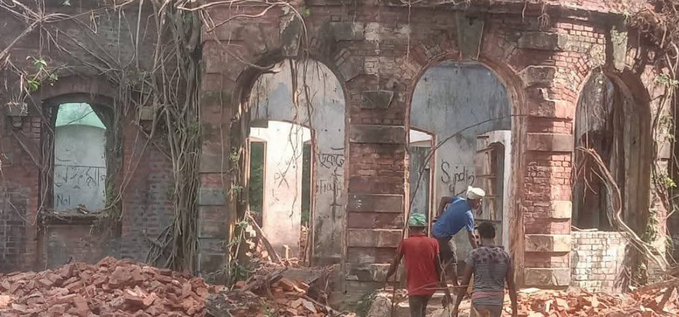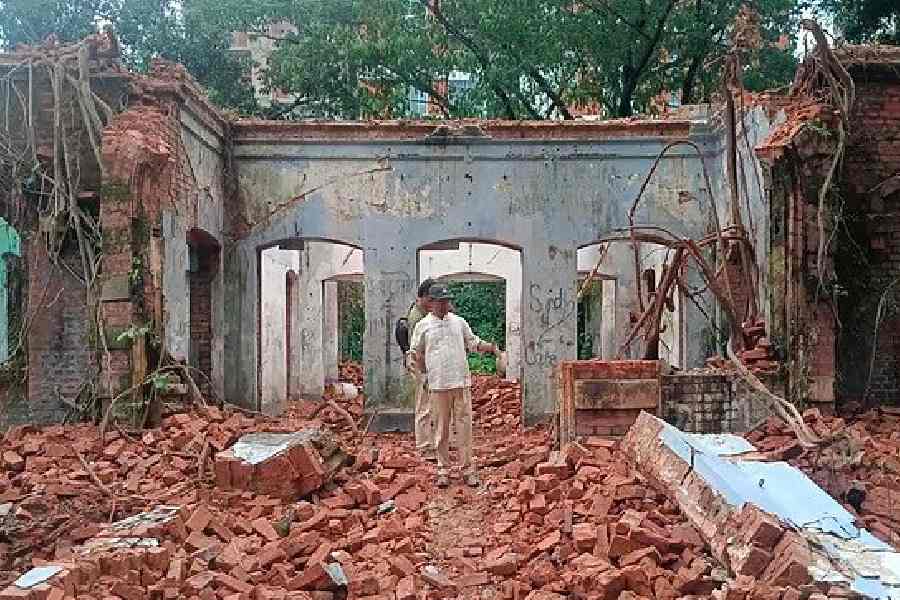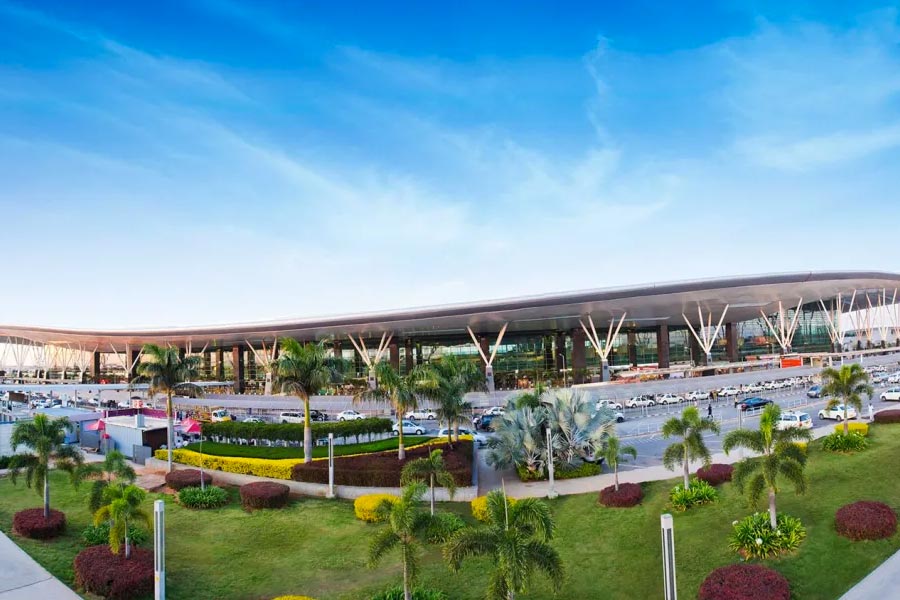India on Tuesday called on Bangladesh to reconsider its decision to demolish the ancestral property of filmmaker Satyajit Ray and offered help to preserve the iconic building as it symbolises Bangla cultural "renaissance".
Describing the move to demolish the "landmark" building in Mymensingh as a matter of "profound regret", New Delhi also urged Dhaka to convert it into a museum symbolising shared culture of the two countries and pledged to extend cooperation for it.
“We note with profound regret that the ancestral property of noted filmmaker and litterateur Satyajit Ray in Mymensingh, Bangladesh... is being demolished,” the ministry of external affairs said. “Given the building’s landmark status, symbolising Bangla cultural renaissance, it would be preferable to reconsider the demolition and examine options for its repair and reconstruction...”
India added that it was “willing to extend cooperation” for the restoration of the building, which once belonged to Upendra Kishor Ray Chowdhury, Ray’s grandfather and a prominent figure in Bengali literature and printing.
A crumbling heritage
The building on Harikishore Ray Road, a modest single-storey structure, was last used in 1989 as the Mymensingh Shishu Academy, a cultural space for children. But over the past decade, due to neglect and disrepair, the building has remained abandoned.
In recent days, work began on demolishing it to make way for a semi-permanent facility for the Academy.
Local reports confirmed that the demolition is already underway.
Harikishore Ray Chowdhury, a zamindar of Mosua in Kishoreganj, was the patriarch of a literary dynasty: his descendant Upendra Kishor Ray Chowdhury was a pioneer of Bengali children's literature, whose son Sukumar Ray became a celebrated poet and satirist.
Following the 1947 Partition, the property came under Bangladeshi government ownership.

X/@shishirkb
West Bengal Chief Minister Mamata Banerjee on Tuesday condemned the move, calling it “extremely distressing” and urging Bangladesh to halt the demolition.
“I appeal to the Bangladesh government and all the conscientious people of that country to take steps to preserve this heritage building,” she posted on social media. Banerjee also called on the Indian government to intervene, which it formally did through the MEA’s statement.
Bangladesh's department of archaeology has confirmed that the building was constructed more than a hundred years ago. After the partition of 1947, the property came under the ownership of the Bangladeshi government.
Md Mehedi Zaman, children affairs officer in Dhaka, told The Daily Star that activities of the Shishu Academy had been operating from a rented location for years. “The house has been left abandoned for 10 years,” he said.
Zaman added that a semi-concrete building with several rooms would be constructed in its place to resume academy operations. The demolition, he confirmed, is being carried out with the necessary approvals.
When asked why a building of such historical and cultural significance was being torn down, the official stated that it posed a safety risk for children who gather at the compound.
Sandip Ray: “My father didn’t use photos of the house”
Filmmaker Sandip Ray, son of Satyajit Ray, told NDTV that while he has never visited the property himself, his father had considered using photographs of the house in a documentary on Sukumar Ray.
But after seeing images of the deteriorating structure, Satyajit Ray decided against it. “My father sent an associate to Bangladesh to take pictures,” Sandip said. “But after seeing the state of the house in those pictures, he did not use them in the documentary.”
No formal response has yet come from Dhaka.










